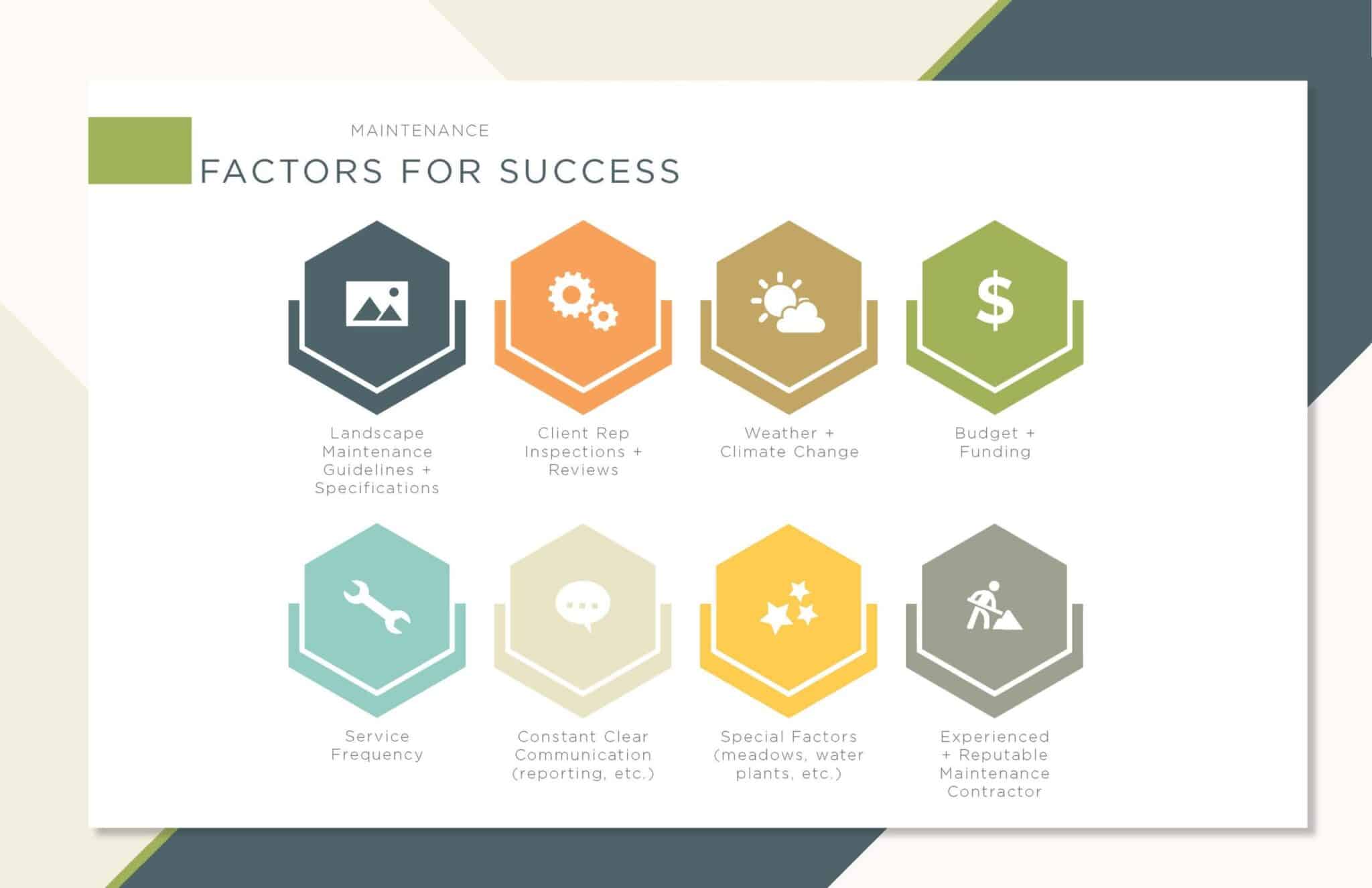BEST PRACTICES
RIGHT-OF-WAY: NOT JUST FOR STREETS
Author: Jason Miller, Geoff Carleton, Matt Buchanan
Right-of-ways continue to transform from merely vehicular thoroughfares to spaces that enhance and strengthen communities. Reimagining what public spaces can be will improve the quality of life for all future users. This article will outline the findings that were presented at the 2023 TX ASLA Conference by Jason Miller, Geoff Carleton, and Matt Buchanan.

Originating in England and called public footpaths, right-of-ways were primarily used to connect the public to schools, churches, and neighboring villages. However, with the mass production of automobiles and the creation of the interstate highway system, the commuter way of life became prioritized. Programming has become more prevalent in the public realm which has led to destination opportunities within right-of-ways. These programming considerations, such as outdoor dining, art installations, and ride-sharing services, are now being made to no longer promote a predominantly vehicle-centric streetscape but rather one that supports all users including pedestrians, bikers, and businesses along these thoroughfares. This shift contributes to placemaking, improved functionality, branding opportunities, and economic prosperity.
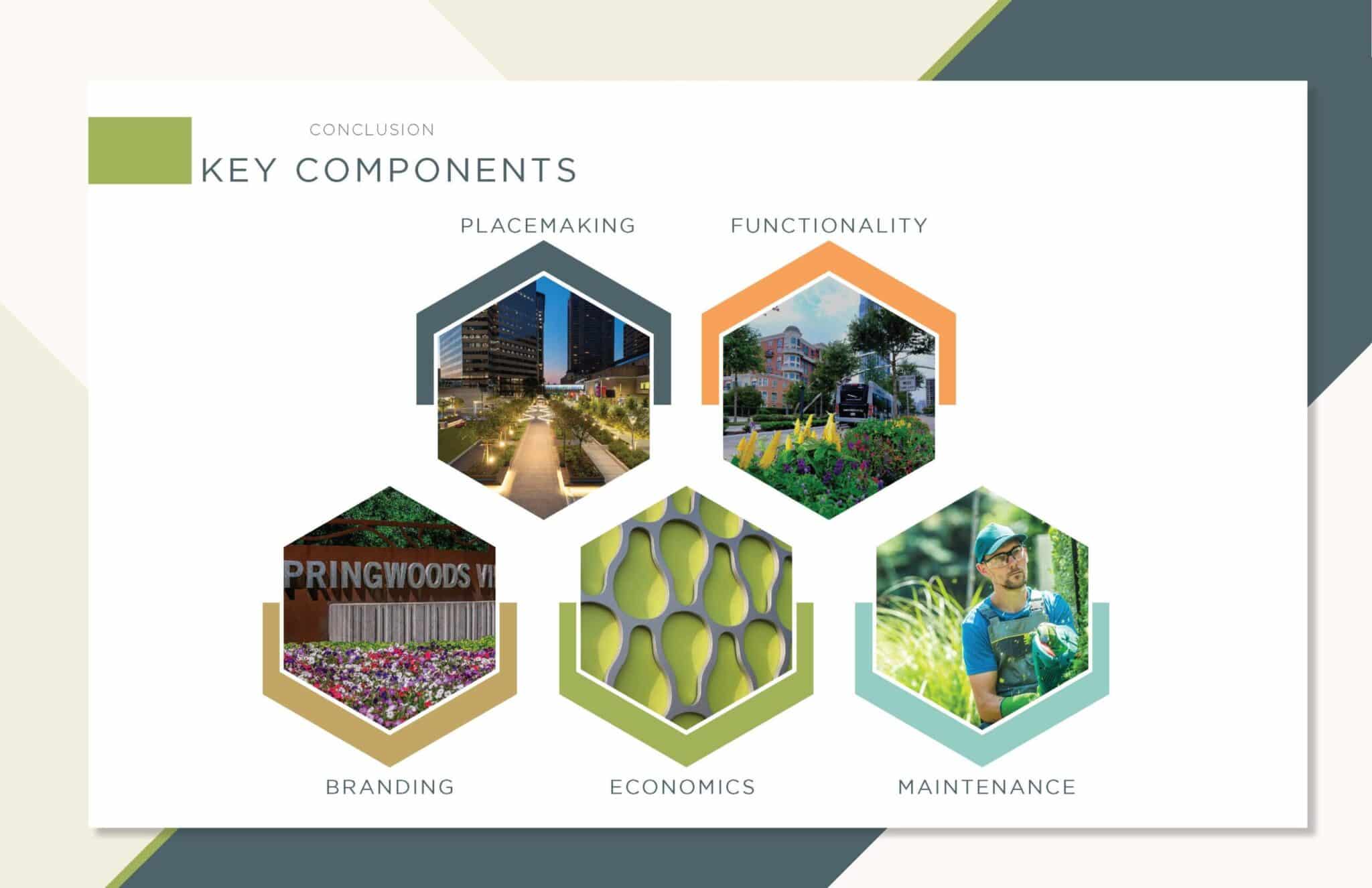
Various public entities are rethinking and beautifying right-of-ways in an effort to promote community vitality. Many have developed initiatives and resource guides that advocate for shareable streetscapes or have established design guidelines within their jurisdictions. This is represented on Houston’s Main Street, an urban, downtown artery that has evolved within the last decade. With the addition of the light rail that reduced vehicular access, site furniture, a water feature, and on-street dining, Main Street has transformed from a concrete commute corridor into an active space for a diverse user group at varying times of the day.
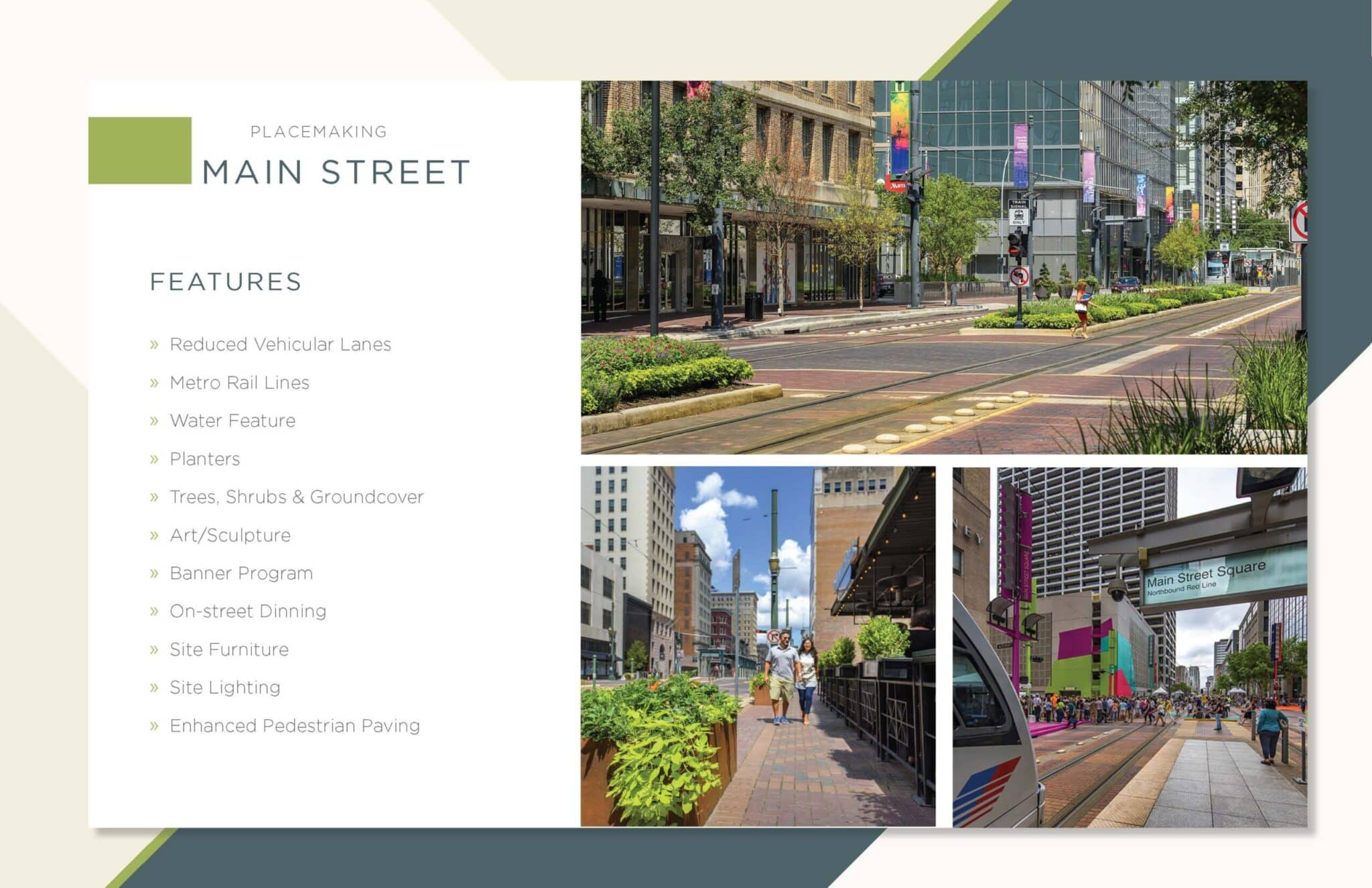
The streetscape is an insightful space where the core values of the owners are clearly on display. It is evident at first glance whether equity, safety, universal access, or entertainment has been prioritized. The prevailing approach to street design begins with traffic lanes and medians, where speed and increased automobile capacity are accommodated, and pedestrians, along with other end users, are an afterthought. Design professionals are instead challenged to utilize an “outside-in” approach, where all roadway users’ experiences take precedence. A right-of-way with ample pedestrian and bike lanes, shade, and destinations that engage the street represents a community whose health and wellness are highly regarded without sacrificing user capacity.
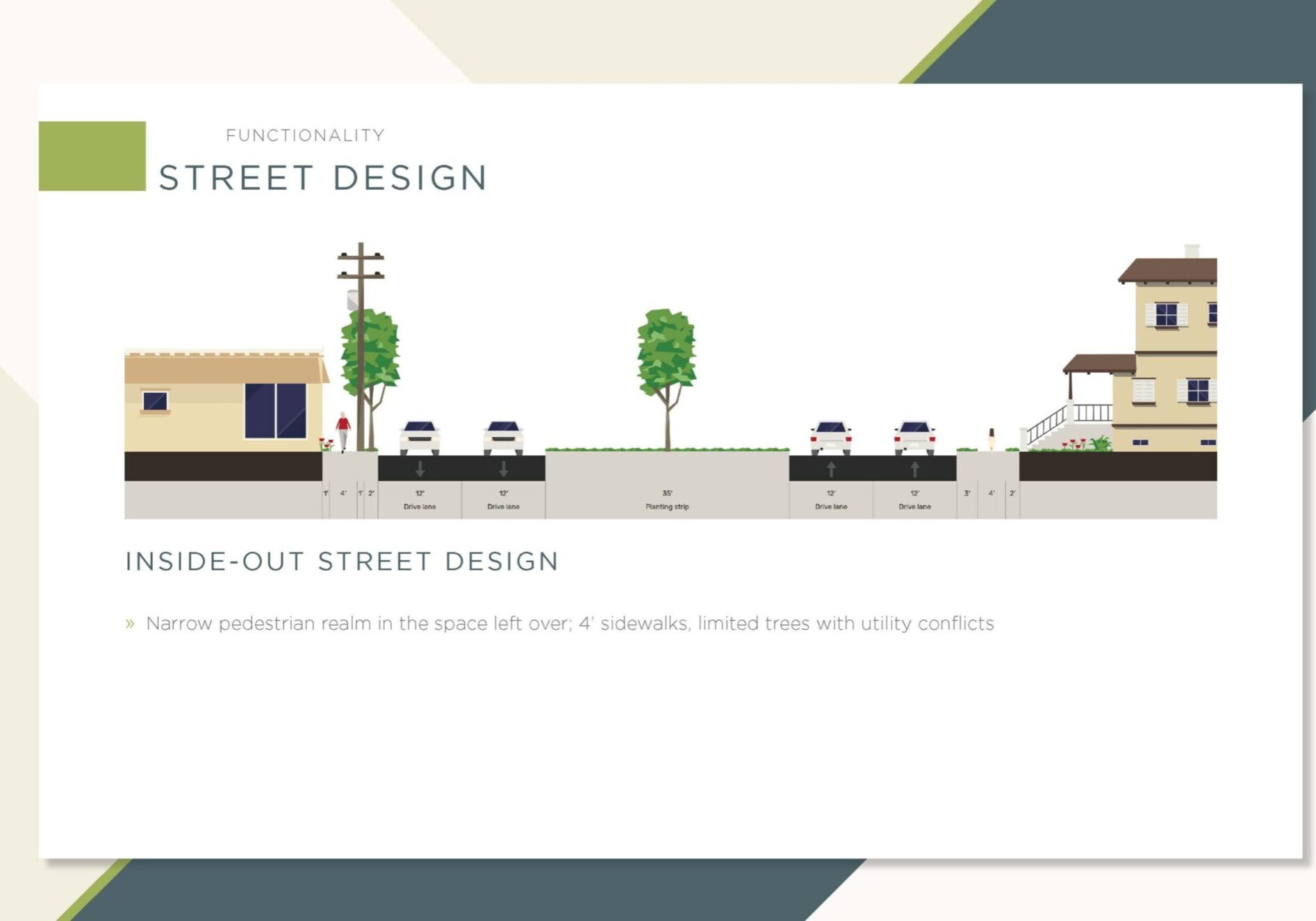
Design values within the streetscape can also be visualized through branding and placemaking efforts. By incorporating logos on signage and monumentation along with a distinct color palette and materiality, special districts and municipalities are afforded a prime opportunity to develop cohesive public spaces that are unique to their community. The Hobby Area Management District, ahead of Super Bowl LI, did not feel that their district was easily recognizable. Although a primary gateway into the City of Houston via Hobby Airport, the area was not considered welcoming and did not properly accommodate the existing residents who relied on public transportation. To resolve this, a branding identity was created featuring new typography, a logo, and a color palette. Over four hundred trees were planted within medians and branded bus shelters now provide shade and respite from the Texas heat. Other impactful improvements included site furniture, LED street lighting, and the adoption of a community signage program, all of which create a complete street for all users.

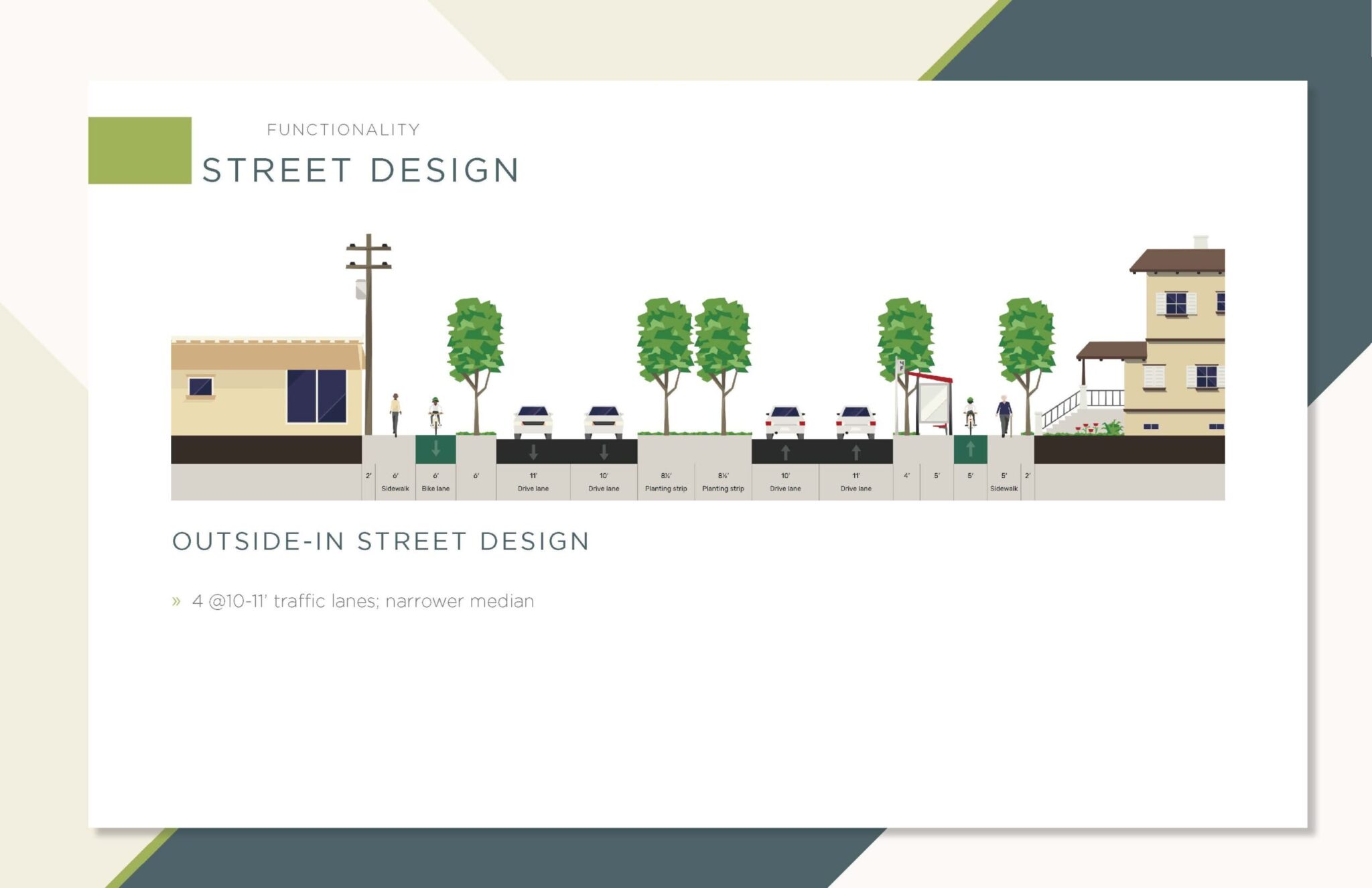
These enhanced right-of-way opportunities act as a catalyst for economic growth by spurring an expansion of commercial corridors, residential developments, and mixed-used spaces. Although one of the nation’s fastest-growing cities, Pearland was often overlooked by those passing through. The city’s strategic plan identified possible infrastructure and mobility upgrades as well as aesthetic improvements along major thoroughfares. With beautified streetscapes and the installation of branded gateways at key entry points, Pearland has become a competitive destination for businesses and families to call home.
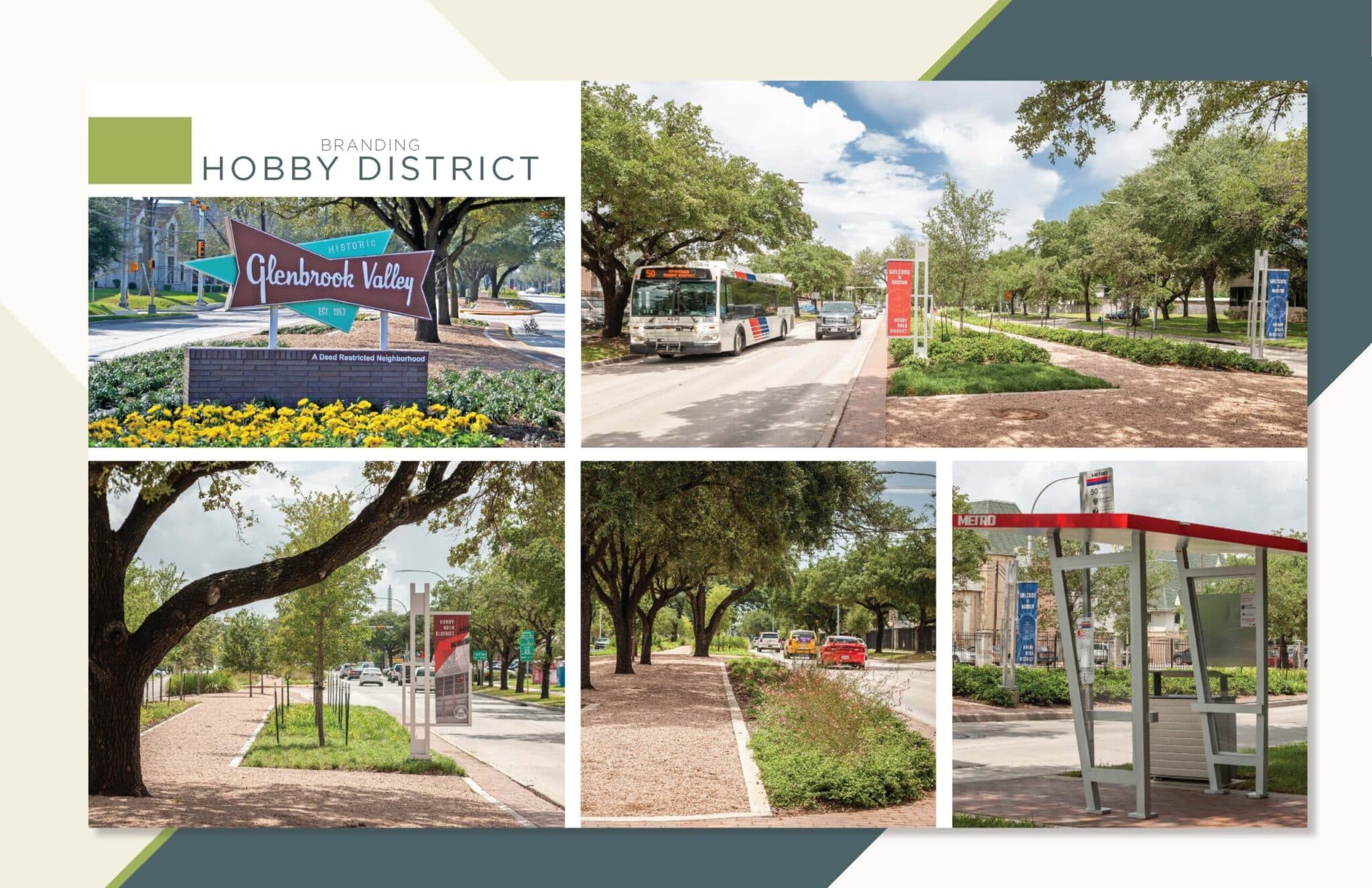
However, the sustainability of these streetscape improvements is only viable with a dedication to maintenance. Factors for success include: developing maintenance guidelines and specifications; involving a client representative for site inspections and periodic reviews; monitoring the weather and climate change; establishing a maintenance budget and understanding associated costs; outlining the frequency of service; and, perhaps most importantly, selecting an experienced and reputable maintenance contractor who will embrace the client’s goals.

Right-of-ways continue to transform from merely vehicular thoroughfares to spaces that enhance and strengthen communities. Reimagining what public spaces can be will improve the quality of life for all future users.
View the full presentation given at the 2023 Texas ASLA Conference here.
